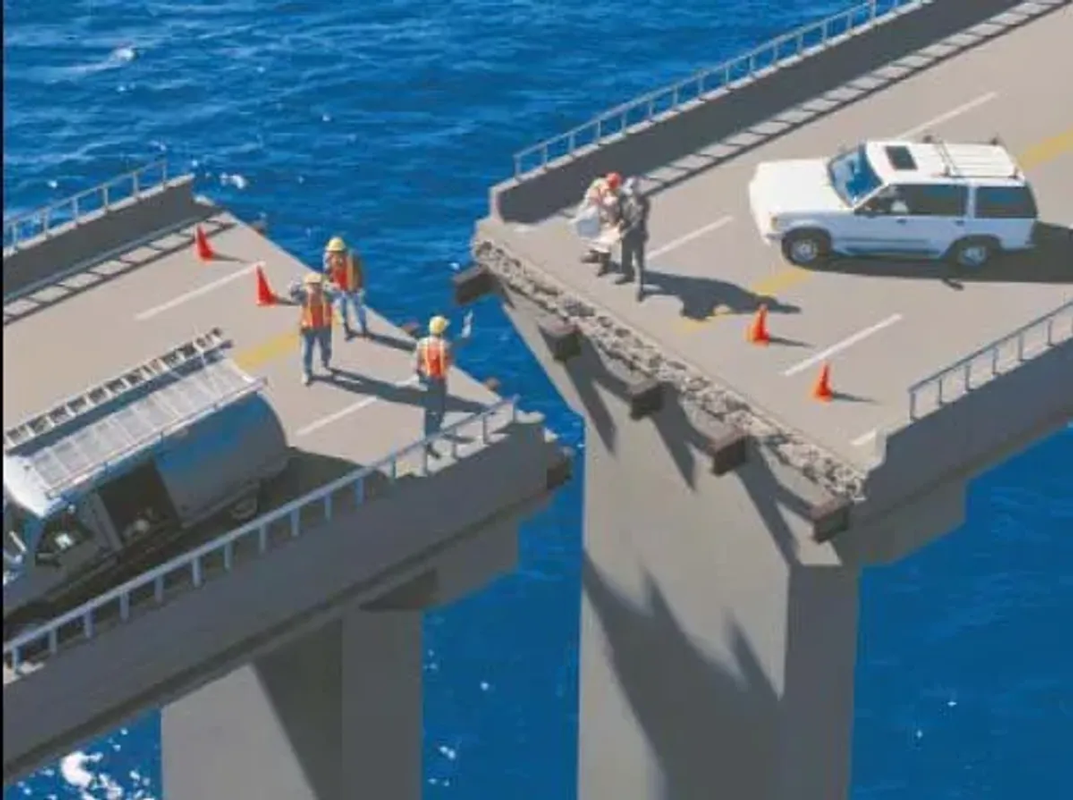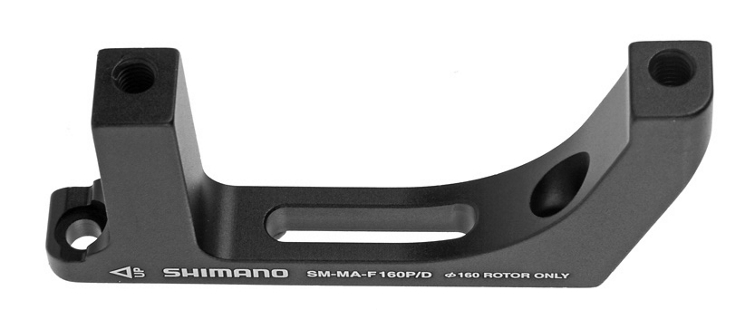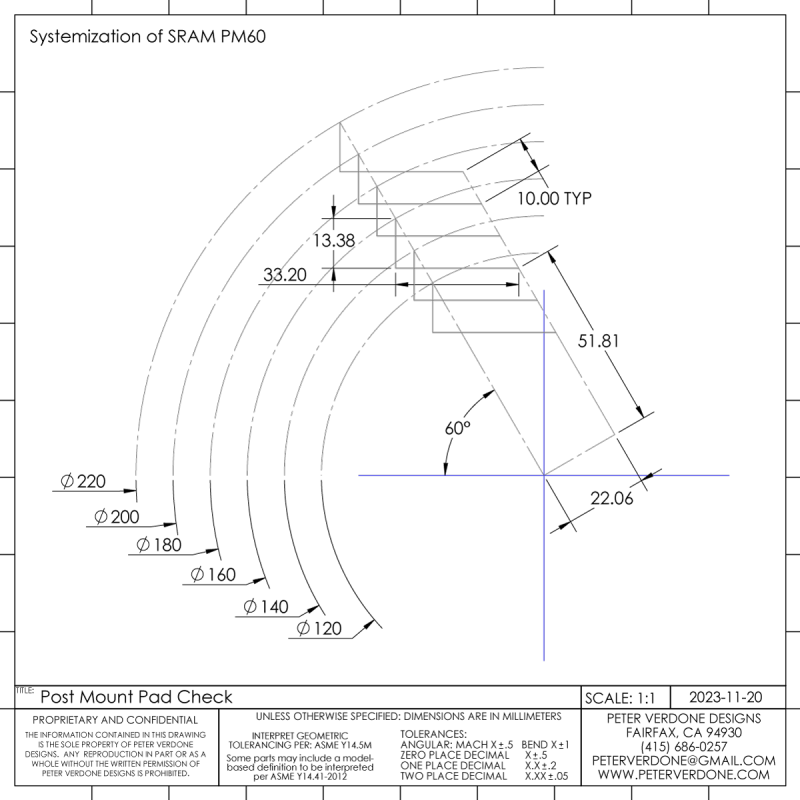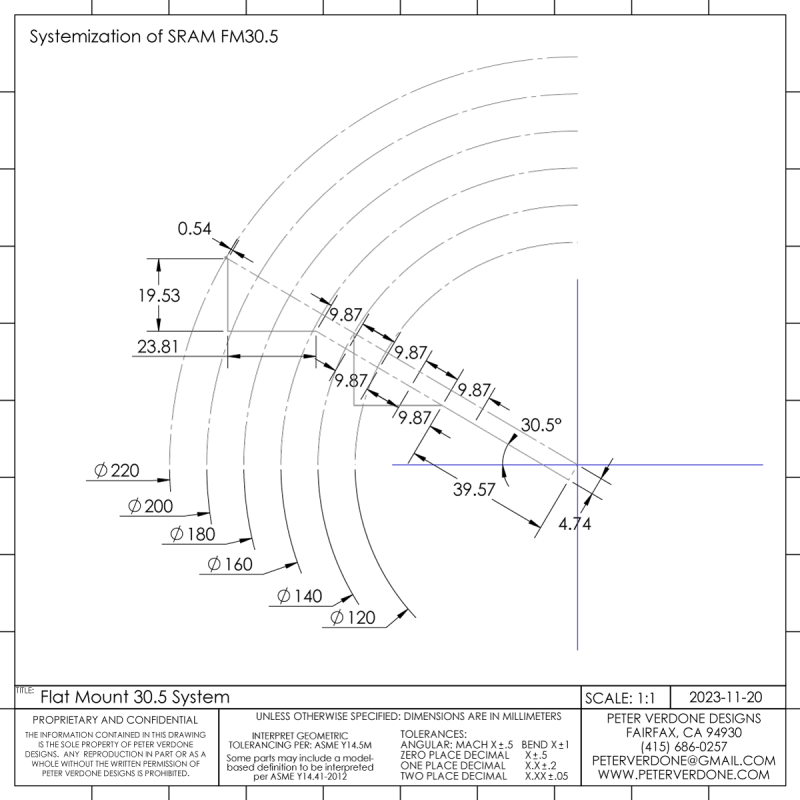Last night I got a call from Ronen. He was finally getting around to mounting post mount calipers to his all-road bike.
We have special conditions in Marin and the way Ronen and I use our all-road bikes push lightweight flat mount caliper brakes to their limit. Since I’m old and fat, I made the switch to four pot post mount calipers long ago. Ronen has finally given in and is ditching the flat mount calipers that boil from time to time.
This is all nice for the rear end. I have special adapters to step up from FM30.5R/160 to PM60/180 (or 160). Parts bolt up nice and easy. The problem comes at the fork. Ronen has a Whiskey No. 9 MCX fork on his bike. That fork comes with FM32F/160. You would (again) think that there would be a commercially available adapter for post mount for this fork. Nope. All of the adapters that are available are specified for FM32F/140. Still, we were able to get a Shimano ISMMAF160PDA adapter to work.
Since I’ve been tending to use my own specification for caliper mounting on forks, PVD Sidewinder, I had made my own adapters years ago. That wasn’t going to help Ronen in any way today.
We had a discussion about all of this. Ronen is no slouch and he wanted to understand the issue at hand. I have done a lot of work on caliper mounting for years but that needed an update. It was late. I promised to work some stuff out in the morning.
A few years ago, SRAM updated their specification for post mount calipers. I believe somebody there is reading my work as it’s been fixed from earlier drafts. The post mount specification is a 60 degree translation at 10mm increments starting from the 160mm rotor configuration.
As discussed in an earlier post, the SRAM system can be defined as:
“Post Mount 60 Top” = sin ( 60.0 ) * ( 51.81082007 + ( “Rotor Size” – 160 ) / 2 ) + cos ( 60.0 ) * 22.06102725
“Post Mount 60 Bolt#1” = cos ( 60.0 ) * ( 51.81082007 + ( “Rotor Size” – 160 ) / 2 ) – sin ( 60.0 ) * 22.06102725
“Post Mount 60 Bolt#2” = “Post Mount Bolt#1” + 74.17mm
Ronen wanted to understand what was driving my systemization as it related to the pad location and the rotor. I show that below. While I’m drawing the two components (33.2mm & 13.4mm) that locate the radial location of the mount to the rotor edge, the theoretical pad center will be similarly triangulated along the 60 degree translation. Similar triangles and all. Now, in 2023, it’s all fairly elegant and clear. Not so much back in 2018.
Sensibly, the SRAM PM60 system is moving the caliper in 10mm radial steps (20mm diametrically). That’s pretty obviously the way to go for anyone looking to replicate the methodology of a radial mount caliper. RIGHT?!? Right.
So, flat mount gets specified for various rotor diameters a few years ago. It is systemized of the SRAM spec is as below:
“SRAM Flat Mount R Top” = sin ( 30.5 ) * ( 39.57007816+ (( “Rotor Size” – 140 ) * 8.5/10/COS( 30.5 ) ) / 2 ) – cos ( 30.5 ) * 4.73908368
“SRAM Flat Mount R Bolt #1” = cos ( 30.5 ) * ( 39.57007816 + (( “Rotor Size” – 140 ) * 8.5/10/COS( 30.5 ) ) / 2 ) + sin ( 30.5 ) * 4.73908368
“SRAM Flat Mount R Bolt #2” = “SRAM Flat Mount R Bolt #1” + 34mm
We can see an issue right away. In the formula is an expression “8.5/10/COS( 30.5 )” That’s the radial step per 1mm of rotor radius. That’s 9.87mm for a 20mm rotor diameter step. It should be 10mm but that isn’t what has been defined.
What happened?! NOBODY FUCKING KNOWS!
This is important. If a builder follows the spec, then, assuming the caliper is correctly located in the FM30.5R/140 configuration, the caliper will be moving radially closer to the axle as the diameter of the rotor grows. By the time we get to 220mm rotors, the difference will be 0.54mm. This may be trivial…but why build this into a specification when it doesn’t need to be?
This is fucking nuts. Even if we were to have an argument that a pad with a radial shape needs to adjust to fit on a differing radially shaped rotor, that would be moving a pad outward, not inward. Ugh.
Do we, again, have to wildcat another brake mounting system in 2023? It seems so.
I’m busy with another project currently so this will have to wait. I just wanted to discuss some specifics in this space.





